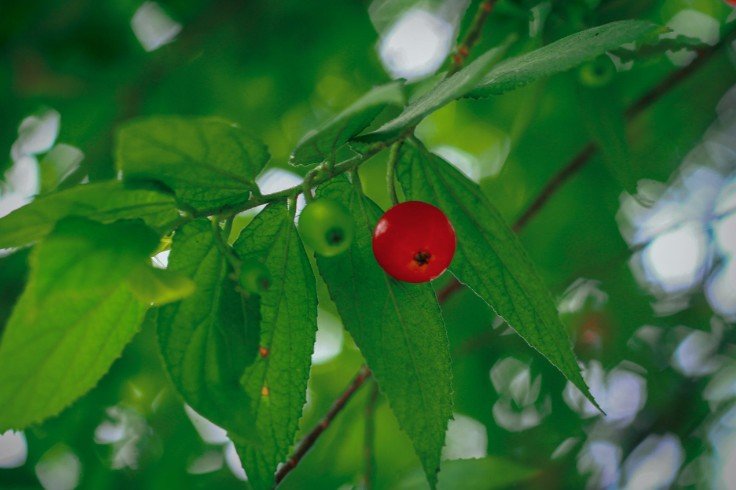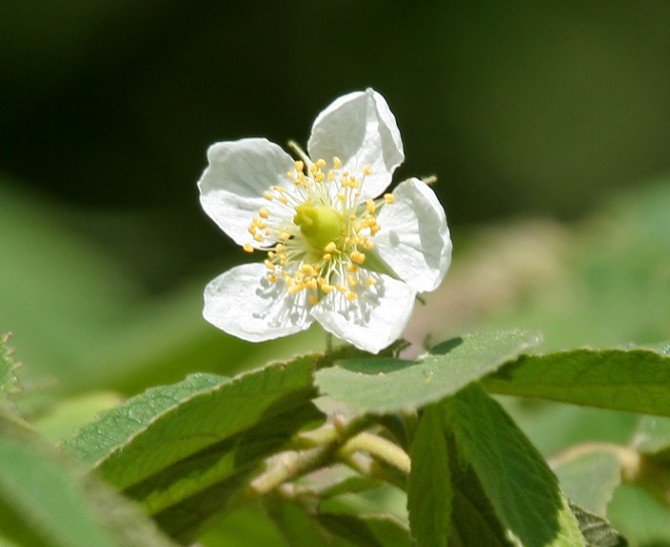If there is one flower you must know more about, it is MuntingiaCalabura, also known commonly as Calabura or Jamaican Cherry. Muntingia grows in the lowland tropics of Western South America, Mexico, The Caribbean and some parts of Kerala. This flower possesses amazing health benefits which we will discuss in the article.
About Muntingia
MuntingiaCalabura is a small evergreen plant with a broad-spreading crown. Its lower branches often touch the ground and its bole can grow up to 20 cm in diameter. Muntingia tree can rise up to 12 metres above the ground. People plant Muntingia either for its flowers or fruits. The flowers grow even in young plants and bloom for a long period during the year.
You will also find Muntingia as an ornamental plant in various tropical escapes. Its habitat is well-drained limestone banks on which it thrives above 600 metre sea level. When planted, Calabura seeds cannot tolerate shade and require ample sunlight to grow. More light means quicker germination which can also get enhanced by the digestive tract of local birds.
The plant has fruits and flowers all year around, but their production is not constant. In places like Costa Rica, fruiting peaks from May to June (at the start of the wet season) while flowering peaks from April to May (at the latter stages of the dry season). If we talk about Southeastern Brazil, peaks occur at the beginning of the wet season from September to December. Muntingia in India sees fruiting peaks in July-October and December-May (i.e. during monsoon and winter-summer seasons).
Nutritional Details
Muntingia cherry or any other part of the plant contains:
- Water
- Protein
- Fat
- Carbohydrates
- Fiber
- Abu
- Calcium
- Riboflavin
- Niacin
- Vitamin c
- Carotene
- Tianin
Health Benefits of Muntingia Calabura
The Calabura plant possesses remarkable health and medicinal value that needs more research work for further discoveries. It can be classified as an important medicinal plant with great edible value. As more people in developing countries turn towards herbal remedies, Muntingia is a staple in various herbal medicines.
Medicinal Uses
Infections and diseases have become a major global burden nowadays. Many people have started believing that herbal remedies are the way to go as they have the least side effects. For example, Morphine causes tolerance and dependence as side effects. We believe that Muntingia or Jamaican Cherry will soon catch the attention of global researchers.
Peruvian people have been using Muntingia for hundreds of years. They use the bark and flowers of the plant as an antiseptic that also reduces swelling. Leaves of Muntingia are boiled or steeped to heal gastric ulcer, reduce the effect of cold & flu and the inflammation of prostate gland. Boiled bark is also used to control swelling of lesser severity.
Anti-Inflammatory
Muntingia plant is anti-inflammatory. Colombian folks boil Muntingia flowers to use as a tonic and tranquilizer. Mexicans use Calabura to treat measles, stomach issues and mouth ache. In Phillipines, the flowers are prescribed to people with headaches and colds. People in Vietnam and Malaysia use the roots of Muntingia to regulate menstrual flow. It can also help treat abdominal cramps via its antiseptic properties; just boil the tree’s flowers and consume it as tea.
Heals Gout
Muntingia fruit is also packed with a lot of nutritional benefits. The cherry is consumed 3 times a day in Indonesia to treat grout. Because it is an anti-inflammatory plant, the cherry reduces swelling in mouth and provides relief. Since Muntingia has only one species, you can never go wrong when buying the cherries at a store.
Boosts Immunity
Muntingia also reduces cell damage arising from oxidization, which in turn enhances your immunity. Its anti-fungal and antibacterial properties also help treat cold, flu, and other infections. Consuming tea of its leaves or munching on the fruit can also help to cure headaches and prevent you from catching a cold. The fruit even relaxes blood vessels, so that blood flow of the body is restored to a healthy state.
Normalizes Blood Sugar Levels
Individuals who’re diabetic should regulate diet by incorporating foods that stabilize blood sugar levels. MuntingiaCalabura is one fruit that contains anti-diabetic elements like fiber, beta-carotene, ascorbic acid, niacin, thiamin, and many other substances that prevent hyperglycemia and manage blood sugar levels.
Apart from its medicinal usage, you can also use muntingia as an insecticide and as an antioxidant in your diet (the cherries).
Jamaican Cherry Juice Recipe
If you are looking to add Muntingua fruit to your diet, the easiest way to do it is by consuming the cherry. Since Jamaican Cherry tastes almost like figs, the juice extract tastes very sweet and refreshing. Here is how you can make Jamaican Cherry juice:
- Blend 1 cup cherries with 1 cup water in a blender
- Separate the pulp by using a strainer (you can have it pulpy too)
- Add granulated sugar and a dash of lime if required
- Add ice and serve!
Where to get cherries for making the juice? During the season, you’ll find dozens in fruit shops and floating markets. Alternatively, you can order them online. If you’re on a holiday in Central America, southern Mexico or the Caribbean, you can just ask the guest house or hotel reception if they can get some for you.
Conclusion
MuntinguaCalabura offers a range of benefits and doesn’t taste that bad either. So, if you get the opportunity to consume it one day, you can be sure you are putting something nutritious in your stomach. Jamaican cherry plants grow in lowland tropical forests, vacant lots, forest edges, margins of waterways and abandoned pastures. Its plant can survive in alkaline and acidic soils as well as poor soils.


